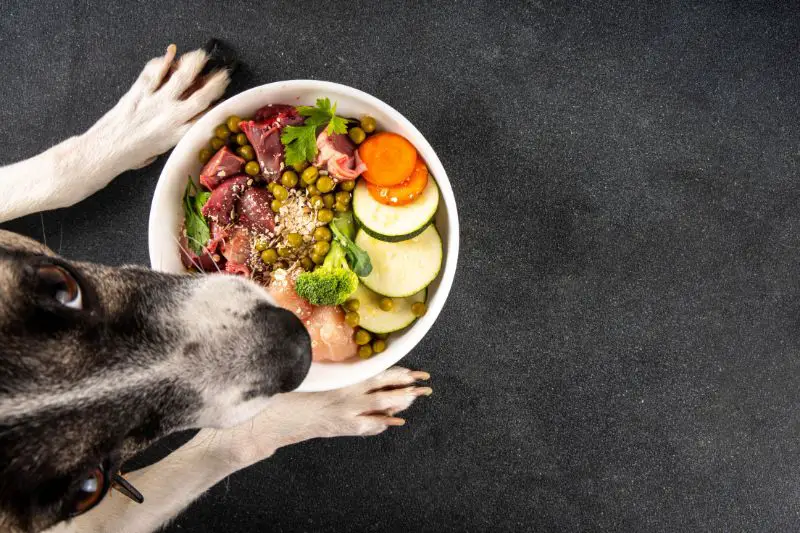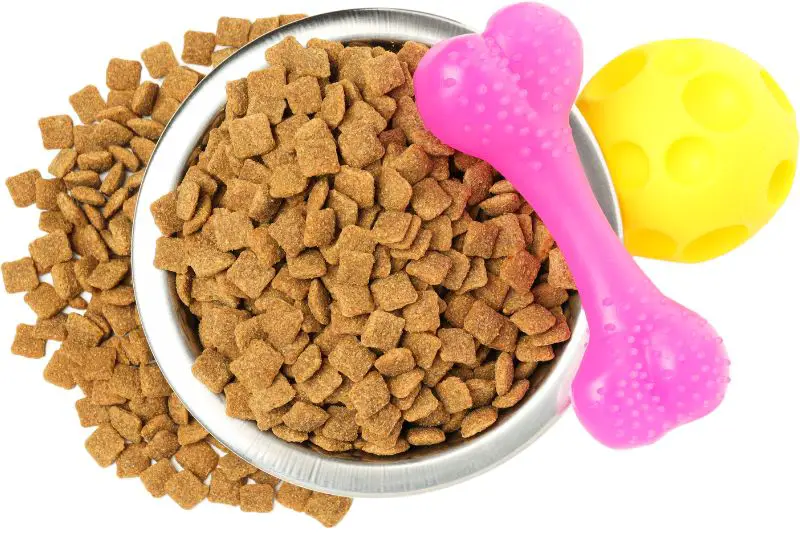
Have you ever wondered what’s really in your pet’s food? As more pet owners treat their furry companions like family, the demand for all-natural pet food is skyrocketing. Gone are the days when a generic bag of kibble would suffice—today’s pet parents are scrutinizing ingredients, questioning sourcing practices, and prioritizing health just as they do with their own diets.
But who exactly is driving this shift? Who is willing to pay a premium for organic, grain-free, or ethically sourced pet food? Whether you’re a pet brand looking to refine your marketing strategy or a curious pet owner, understanding the target market for all-natural pet food is key to navigating this booming industry. In this article, we’ll break down the demographics, motivations, and purchasing habits of the consumers fueling this trend—so you can see if you fit the profile or learn how to connect with them effectively.
Understanding the Natural Pet Food Market

The pet food industry has undergone a significant transformation in recent years. With more pet owners prioritizing their pets’ health and well-being, all-natural pet food has moved from a niche market to a mainstream demand. But what exactly defines this category, and what factors are driving its growth?
What is All-Natural Pet Food?
All-natural pet food refers to products made with minimal processing and high-quality, recognizable ingredients. These foods typically avoid artificial preservatives, colors, and flavors while emphasizing whole-food ingredients such as real meat, vegetables, and natural supplements. Some common features include:
- Organic ingredients free from pesticides and synthetic fertilizers.
- Grain-free or limited-ingredient formulas catering to pets with allergies or sensitivities.
- Human-grade quality, ensuring the highest safety and nutritional standards.
- Ethically sourced proteins and sustainable packaging to appeal to eco-conscious buyers.
Key Trends Driving Market Growth
Understanding why the demand for all-natural pet food is rising can help businesses tailor their strategies to meet consumer expectations. Several key trends are fueling this shift:
The Humanization of Pets
Pet owners increasingly view their pets as family members, influencing their purchasing behavior. This shift has led to a demand for higher-quality nutrition, mirroring human dietary trends such as organic, raw, and farm-to-table food. According to a survey by the American Pet Products Association (APPA), 76% of pet owners consider the quality of their pet’s food just as important as their own.
Rising Pet Health Concerns
Just like humans, pets are experiencing a rise in chronic health conditions, including obesity, allergies, and digestive issues. Many pet owners are turning to all-natural diets to address these concerns, opting for products with no fillers, artificial additives, or by-products. Veterinary recommendations also play a crucial role in this shift, as more pet professionals advocate for clean, whole-food diets.
Sustainability and Ethical Sourcing
Environmental awareness is influencing purchasing decisions across industries, and pet food is no exception. Consumers are seeking brands that prioritize sustainability, whether through eco-friendly packaging, responsibly sourced ingredients, or ethical business practices. Transparency in labeling and sourcing is now a key differentiator for natural pet food brands.
Premiumization and Willingness to Pay More
The pet food market has seen a premiumization trend, where pet owners are willing to invest in high-quality products, even at a higher price point. Reports show that natural and organic pet food sales have grown by over 10% annually, indicating that consumers perceive these products as a worthwhile investment in their pet’s long-term health.
Primary Target Audience for All-Natural Pet Food

The demand for all-natural pet food is driven by a specific group of consumers who prioritize quality, health, and sustainability. Understanding their motivations and purchasing behaviors can help pet food brands refine their marketing strategies and better connect with their ideal customers. Below are the key segments that make up the primary target audience.
Health-Conscious Pet Owners
One of the largest consumer groups for all-natural pet food is health-conscious pet owners. These individuals view their pets’ nutrition as an extension of their own dietary habits and seek out high-quality, minimally processed ingredients.
What Motivates Them?
- Concerns about pet allergies, digestive sensitivities, and chronic health conditions.
- A preference for real, recognizable ingredients over artificial additives.
- Influence from veterinarians, pet nutritionists, and scientific studies linking diet to long-term health.
Buying Behavior
- More likely to read ingredient labels and research brands before purchasing.
- Prefer grain-free, organic, or raw food options.
- Willing to pay a premium for nutritional benefits and long-term health outcomes.
Millennials and Gen Z Consumers
Younger pet owners, particularly Millennials and Gen Z, represent a significant portion of the all-natural pet food market. According to a Packaged Facts report, Millennials make up more than 30% of all pet owners and are the largest spenders on pet products.
What Motivates Them?
- A strong belief in pet wellness and holistic health.
- Preference for sustainability, ethical sourcing, and transparency in pet food brands.
- Influence from social media, online reviews, and pet influencers.
Buying Behavior
- Frequently shop online, often through direct-to-consumer brands, subscription services, or specialty retailers.
- Favor brands with strong digital engagement and social responsibility initiatives.
- More likely to experiment with trendy diets such as raw feeding or plant-based pet food.
Environmentally Conscious Consumers
Sustainability is becoming a top priority for many consumers, including pet owners. This audience is drawn to brands that prioritize eco-friendly practices, both in sourcing and packaging.
What Motivates Them?
- Concern over the environmental impact of traditional pet food production.
- Desire to support brands with ethical supply chains, recyclable packaging, and sustainable farming practices.
- Interest in alternative protein sources such as insect-based or plant-based pet food.
Buying Behavior
- Actively seek out brands that highlight sustainability efforts in marketing materials.
- More likely to choose biodegradable packaging, ethically sourced meats, and organic ingredients.
- Engage with companies that support animal welfare and environmental causes.
Pet Owners with Special-Needs Pets
Pets with dietary restrictions, food sensitivities, or chronic health issues often require specialized nutrition. Their owners are highly selective about ingredients and rely on all-natural pet food to manage their pets’ well-being.
What Motivates Them?
- A need to alleviate health conditions such as skin allergies, gastrointestinal disorders, or joint problems.
- Trust in high-quality, hypoallergenic, and veterinarian-recommended diets.
- Fear of harmful additives and low-quality fillers found in conventional pet food.
Buying Behavior
- Frequently consult veterinarians, pet nutritionists, and online forums for recommendations.
- Prefer customized meal plans, prescription-grade formulas, or raw food diets.
- More loyal to brands that offer scientific backing and third-party testing.
High-Income Households
Affluent pet owners represent a lucrative market segment for premium all-natural pet food brands. These consumers are less price-sensitive and place a high value on quality, exclusivity, and brand reputation.
What Motivates Them?
- Desire to provide the best possible nutrition for their pets, regardless of cost.
- Attraction to luxury, boutique, or artisanal pet food brands.
- Interest in personalized nutrition services, high-end packaging, and concierge pet care.
Buying Behavior
- More likely to shop at premium pet boutiques, high-end grocery stores, and specialty e-commerce platforms.
- Interested in custom subscription boxes, fresh meal delivery, and gourmet pet food options.
- Brand loyalty is driven by exceptional quality, customer service, and exclusivity.
Each of these consumer segments plays a vital role in shaping the all-natural pet food market. By understanding their motivations and behaviors, pet food brands can tailor their messaging, product offerings, and marketing strategies to better serve their ideal customers. The next section will explore where to find these consumers and how to effectively reach them.
Where to Find the Target Market for All-Natural Pet Food

Understanding where your target audience spends time—both online and offline—can help you position your all-natural pet food brand effectively. By identifying the right platforms, retailers, and communities, businesses can maximize their reach and engagement.
Online Communities and Social Media
Digital platforms are a powerful way to connect with pet owners, especially Millennials and Gen Z consumers who rely heavily on online research and recommendations. Social media, forums, and digital marketplaces are key touchpoints for engaging this audience.
Social Media Platforms
- Instagram & TikTok – Highly visual platforms where pet owners share experiences, follow pet influencers, and engage with brands. High-quality images, videos, and user-generated content (UGC) can boost brand awareness.
- Facebook Groups – Communities focused on pet health, raw feeding, and holistic pet care provide valuable spaces for discussion and product recommendations. Brands can participate by offering insights, answering questions, and sharing educational content.
- YouTube & Pinterest – Long-form content, such as pet nutrition guides, feeding tips, and brand storytelling, performs well here. Tutorials on pet food benefits or behind-the-scenes looks at ingredient sourcing can help build trust.
Online Marketplaces
Many pet owners shop online for convenience, especially for subscription-based pet food services. Platforms such as:
- Amazon & Chewy – Major e-commerce retailers where pet owners search for customer reviews and ratings before purchasing.
- Direct-to-Consumer (DTC) Websites – Many brands, such as The Farmer’s Dog and Open Farm, have built strong customer relationships through their own websites, offering subscription-based fresh meal deliveries.
Specialty Pet Stores and Holistic Veterinary Clinics
While large pet retailers stock natural pet food, specialty pet stores and holistic veterinary clinics are prime locations to reach discerning pet owners looking for high-quality options.
Independent Pet Retailers
- These stores often curate premium, all-natural brands that align with their health-conscious customer base.
- Store associates provide personalized recommendations, which can increase brand loyalty.
- Brands can partner with retailers for sampling events, in-store promotions, and educational workshops.
Holistic and Integrative Veterinary Clinics
- Veterinarians who specialize in natural and integrative pet care frequently recommend all-natural diets.
- Partnering with veterinary professionals to provide exclusive products or expert-backed endorsements can strengthen consumer trust.
Subscription Box Services and Organic Food Retailers
The rise of subscription-based pet food services has made it easier than ever for pet owners to access high-quality, all-natural meals without visiting a physical store.
Subscription-Based Pet Food Services
- Brands like Ollie, Nom Nom, and The Farmer’s Dog have capitalized on customized meal plans and doorstep delivery, appealing to busy pet owners who prioritize convenience.
- Consumers attracted to subscription models tend to be loyal, long-term buyers willing to invest in their pet’s health.
Organic and Natural Food Stores
- Whole Foods, Sprouts, and local organic markets often carry premium pet food brands that align with their shoppers’ values.
- Customers who already prioritize clean eating and sustainability for themselves are more likely to seek similar options for their pets.
Industry Events and Pet Expos
Pet expos, industry trade shows, and local events offer valuable opportunities to connect with pet owners in person, showcase products, and build brand credibility.
Popular Industry Events
- Global Pet Expo – One of the largest pet industry trade shows, attracting retailers, distributors, and pet lovers.
- SuperZoo – A major event where pet businesses launch products, network, and connect with industry professionals.
- Local Pet Wellness Events – Farmers’ markets, pet adoption events, and holistic pet fairs provide a great way to engage with health-conscious pet owners directly.
How to Market All-Natural Pet Food to This Audience

Successfully marketing all-natural pet food requires a deep understanding of consumer values, preferences, and purchasing behaviors. A strategic approach that highlights health benefits, sustainability, and transparency will resonate most with this audience. Below are key tactics to effectively reach and engage these consumers.
Leverage Social Media and Digital Marketing
Consumers increasingly turn to social media for pet care advice, product recommendations, and brand interactions. A strong digital presence is essential for capturing attention and building brand trust.
Engage with Pet Owners on Social Platforms
- Use Instagram and TikTok to showcase behind-the-scenes production, customer testimonials, and pet transformations after switching to all-natural food.
- Partner with pet influencers who align with your brand values to promote authenticity and reach a wider audience.
- Utilize Facebook Groups and Reddit communities where pet owners discuss nutrition, ask for advice, and share recommendations.
Create High-Value Content
- Publish blog posts, videos, and infographics that educate consumers on the benefits of all-natural pet food.
- Offer free guides on topics like “How to Transition Your Pet to a Natural Diet” or “Understanding Pet Food Labels.”
- Host live Q&A sessions with veterinarians or pet nutritionists to build credibility and engage directly with potential customers.
Emphasize Health Benefits and Transparency
Consumers in this market are highly ingredient-conscious and expect full transparency from brands. Clearly communicating what’s in your product—and what’s not—can differentiate your brand.
Highlight Ingredient Quality
- Use clear, easy-to-read labels showcasing real meat, whole vegetables, and superfoods.
- Avoid vague terms like “meat by-products” and instead list specific protein sources such as “grass-fed beef” or “wild-caught salmon.”
- Offer third-party certifications (e.g., USDA Organic, Non-GMO, Human-Grade) to reinforce quality claims.
Show the Manufacturing Process
- Share videos or blog posts explaining how your food is made and where ingredients are sourced.
- Provide access to lab test results, nutritional analysis, and supplier partnerships to establish credibility.
Use Influencer and Affiliate Marketing
Word-of-mouth marketing is powerful in the pet industry. Partnering with trusted voices in the pet community can enhance brand awareness and credibility.
Collaborate with Pet Influencers
- Identify influencers whose audience aligns with your target market (e.g., holistic pet care advocates, rescue organizations, or vet influencers).
- Encourage them to share real experiences and testimonials instead of scripted promotions.
Launch an Affiliate Program
- Offer commission-based partnerships with pet bloggers, trainers, and nutritionists who can recommend your brand through articles and videos.
- Create unique discount codes for affiliates to share with their audience, providing an incentive for first-time buyers.
Offer Free Samples, Loyalty Programs, and Subscription Services
Providing risk-free ways for consumers to try your product can drive conversions and foster long-term loyalty.
Free Samples and Trial Packs
- Offer sample-sized portions to introduce pet owners to your brand without requiring a full purchase commitment.
- Partner with pet subscription boxes like BarkBox or meowbox to reach new customers.
Reward Customer Loyalty
- Implement a loyalty rewards program that gives points for purchases, referrals, and social media engagement.
- Provide exclusive discounts to returning customers who subscribe to regular deliveries.
Educate and Build Community Engagement
Brands that position themselves as trusted advisors rather than just product sellers can build long-term customer relationships.
Host Educational Webinars and Events
- Invite experts to speak on pet nutrition, holistic health, and sustainable pet care.
- Organize live product demonstrations showcasing ingredient benefits and preparation methods.
Foster a Community
- Create a dedicated customer forum or private Facebook group where pet owners can share experiences and ask questions.
- Encourage user-generated content by asking customers to share before-and-after stories, feeding routines, or pet health transformations.
Conclusion
The demand for all-natural pet food continues to grow as pet owners become more conscious of their pets’ health, sustainability, and ingredient quality. Successfully reaching this market requires a deep understanding of consumer motivations, strategic placement in key retail and online spaces, and a strong marketing approach that prioritizes education and transparency.
By identifying and targeting the right audience—health-conscious pet owners, Millennials and Gen Z, environmentally aware consumers, and those with special-needs pets—brands can craft messages that resonate and drive engagement. Placing products in specialty pet stores, holistic vet clinics, online marketplaces, and subscription services ensures accessibility to the right buyers.
Effective marketing strategies such as social media engagement, influencer partnerships, loyalty programs, and transparent ingredient sourcing help build trust and long-term customer relationships. Brands that focus on authenticity, quality, and community-building will stand out in this competitive industry.
As the natural pet food market continues to evolve, companies that stay ahead of consumer trends, maintain ethical and sustainable practices, and foster strong customer connections will not only drive sales but also create a lasting impact in the pet wellness space.
